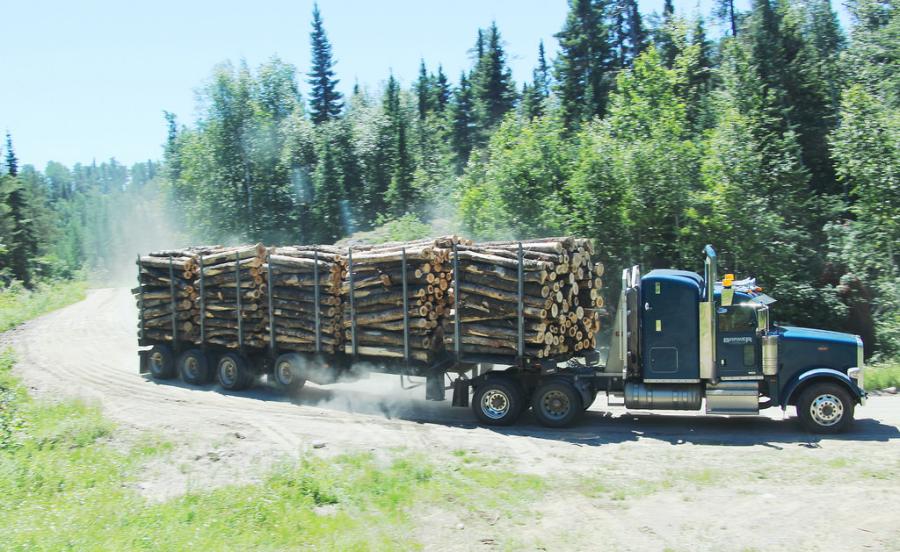Fri February 01, 2019
Jennifer McKevitt - CEG Correspondent
Moving cut wood is a challenge for loggers and forestry workers. Below we've detailed some of the logging transportation options best suited to handle log removal or transport.

Tree length log trucks come in two types: stinger-steer log trailers or fixed length log trailers. Pole trailers generally seek to reduce the weight of the log by leaving the center unsupported in order to minimize tare or truck weight, resulting in lower highway tolls. Instead of being fully supported throughout, the logs are secured between end bolsters.
This type of trailer sits on double-axle wheels with a rotating bunk. When the truck turns, the logs remain secured by the bolsters, though the space between the truck and trailer elongates. Due to physics, this requires the pole connector to telescope. Pole trailers also include stinger-steer types, which are designed to better accommodate frequent tight turns.
Stinger-steered trailers also feature a log bunk over the fifth wheel. The log bunk rotates on the fifth wheel. Further, another set of bunks sits on a pair of axles and can rotate. The tractor portion includes a bar extending from the back, called a reach. The stinger is a telescoping bar that extends from the rear bunks that can either shorten or elongate as needed. The stinger is attached to the reach. Stinger-steers have wheels that follow the path of the tractor when taking corners.
Another option for transporting whole logs is the stinger-reach style trailer. Stinger-reach, or fixed length log trailers are semi-trailers with bunks rather than a box. Instead of a floor, they're equipped with a single or several beams to support the bunks along the trailer's length. Stinger-reach style trailers can carry both tree length logs and numerous bunks of log lengths. However, on public roads, chains or straps are needed to secure all logs from toppling or rolling into the byway.
Log length trucks are the simplest transport vehicles. Generally a straight truck with a plain trailer, it may or may not contain a loader on the rear to aid in moving large logs.
Indexing, or maximizing space on a trailer is a means of utilizing all the space on the trailer. Logs are placed in opposition to one another, meaning top to butt. When an extreme taper is present in the logs being transported, this method is extremely effective at maximizing space.
 Truck and Trailer Equipment
Truck and Trailer Equipment Articles
Articles Email Updates
Email Updates Sell Your Machines
Sell Your Machines

 Truck and Trailer Equipment
Truck and Trailer Equipment Truck and Trailer Dealers
Truck and Trailer Dealers Truck and Trailer Articles
Truck and Trailer Articles Email Updates
Email Updates Sell Your Machines
Sell Your Machines